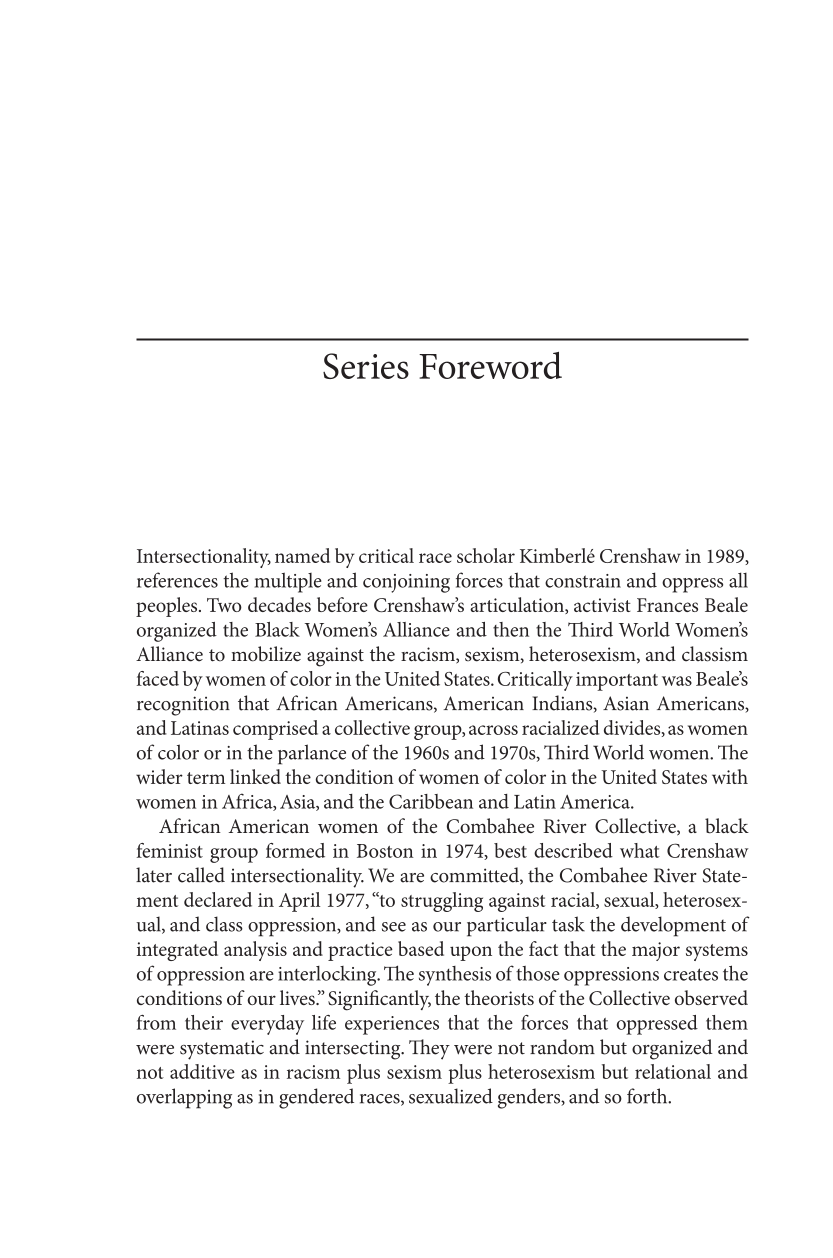Series Foreword
Intersectionality, named by critical race scholar Kimberlé Crenshaw in 1989,
references the multiple and conjoining forces that constrain and oppress all
peoples. Two decades before Crenshaw’s articulation, activist Frances Beale
organized the Black Women’s Alliance and then the Third World Women’s
Alliance to mobilize against the racism, sexism, heterosexism, and classism
faced by women of color in the United States. Critically important was Beale’s
recognition that African Americans, American Indians, Asian Americans,
and Latinas comprised a collective group, across racialized divides, as women
of color or in the parlance of the 1960s and 1970s, Third World women. The
wider term linked the condition of women of color in the United States with
women in Africa, Asia, and the Caribbean and Latin America.
African American women of the Combahee River Collective, a black
feminist group formed in Boston in 1974, best described what Crenshaw
later called intersectionality. We are committed, the Combahee River State-
ment declared in April 1977, “to struggling against racial, sexual, heterosex-
ual, and class oppression, and see as our particular task the development of
integrated analysis and practice based upon the fact that the major systems
of oppression are interlocking. The synthesis of those oppressions creates the
conditions of our lives.” Significantly, the theorists of the Collective observed
from their everyday life experiences that the forces that oppressed them
were systematic and intersecting. They were not random but organized and
not additive as in racism plus sexism plus heterosexism but relational and
overlapping as in gendered races, sexualized genders, and so forth.














































































































































































